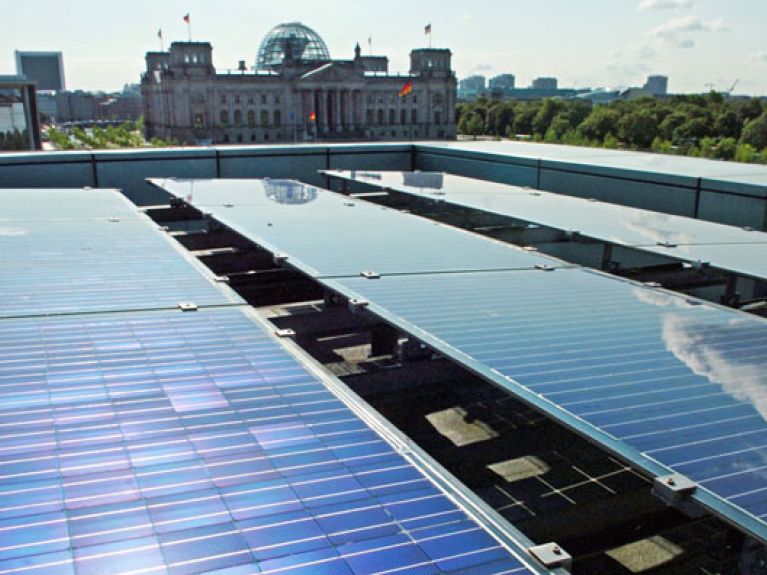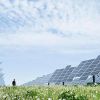Simply renewable
The energy transformation is already visible in many places in Germany – from the Alps to the North Sea.

The Reiteralpe mountain shimmers in the evening sun as though it were powdered with gold dust. The plateau in the Berchtesgaden Alps, with its Alpine roses and Swiss pines, is as peaceful as paradise. Hikers sit on the terrace of the Traunsteiner Hütte mountain lodge, their heavy backpacks propped up against the wooden tables. They are quietly enjoying wheat beer and chamois soup. It was the sun that cooled their drinks and heated their meals, for (apart from an emergency diesel generator) landlord Thomas Krüger gets all the energy he needs for his many guests from photovoltaics and solar heat without emitting a gram of the greenhouse gas CO2.
Up here you can marvel at one facet of a revolution that few other countries can offer: the transformation of the energy system. Other attractions can be found all over Germany in the most beautiful places, for example in the raging North Sea. Germany’s first offshore wind farm, called Alpha Ventus and located 45 kilometres off the coast, supplies electricity for 70,000 households. Tourists can get a close-up view by ship or on a scenic flight. Or in the heart of Berlin: if you take a guided tour of the Federal Press Office, you will learn how offices and conference rooms can be air-conditioned with hot water – using sophisticated technology. Hikers might like to climb up to the pumped storage power plant at Wehr in Hotzenwald; it stores energy in the form of water in an artificial lake, like a gigantic battery. “The use of travelling,” the British author Samuel Johnson once said, “is to regulate imagination by reality, and instead of thinking how things may be, to see them as they are.” That sounds like a piece of fatherly advice for tourists: leave the well-trodden travel routes behind, and if you have a prejudice against radical ideas on eco-friendly energy, at least take a look at how it works in reality.
After all, for years people made fun of the Germans’ yearning to do without nuclear power, coal, gas and oil as soon as possible. How on earth can it work? How can the world’s fourth largest industrial nation satisfy its hunger for energy from wind, solar and hydro power alone? We now know: it can work. And there’s no way of stopping Germany’s “Energiewende” or energy transformation. No one seriously questions that any more. In fact it’s having better results than expected. Around 25% of electricity already comes from green sources, and the Federal Government plans to increase this to at least 80% by 2050. Scientists even believe that 100% is possible. And much earlier, too.
Other nations want to follow Germany’s example. The German Renewable Energy Act (EEG), which accelerates the development of green power plants by charging all consumers a levy, has been an export hit: 19 of the EU’s 27 member states are now using this model for their own energy transformation. And why shouldn’t the energy transformation succeed? Nature supplies enough fuel: theoretically, every single renewable source could cover the world’s appetite for energy several times over. Recent studies show that the energy transformation can also succeed financially. Calculating up to the year 2050, the costs will not be higher than if we stick with nuclear energy and coal. Even if electricity prices initially go up, they will fall by about 30% in the medium term. So in the end the result will be a clear advantage for consumers and industry. The Germans are currently passing through stage two of their energy transformation: they are becoming self-sufficient. Instead of feeding the power generated by the 1.1 million solar-panel-fitted roofs into the grid at subsidized prices, they are increasingly using it themselves. After all, a kilowatt-hour from the roof can now be had for twelve cents, whereas a kilowatt-hour from the local utility costs almost 30 cents.
The children of the energy revolution are running their ovens, TV sets and lamps with homemade, clean energy. Soon they will be recharging their electric cars – and storing surplus solar power overnight in batteries in the cellar. You might say that what landlord Krüger practises up in the Alps is now being continued by millions of people down in the valley. ▪
Rolf-Herbert Peters
